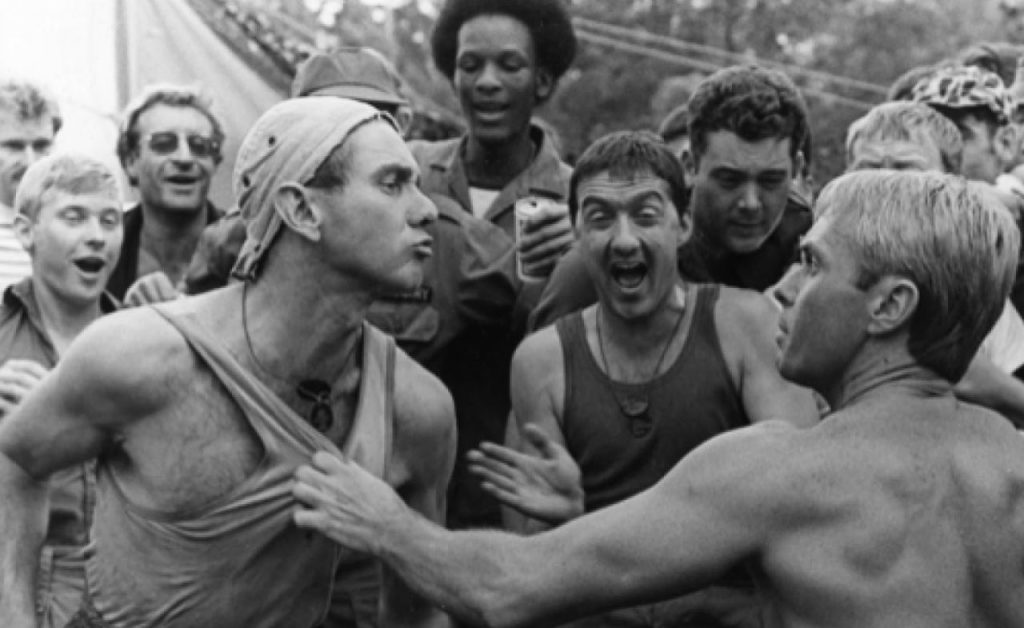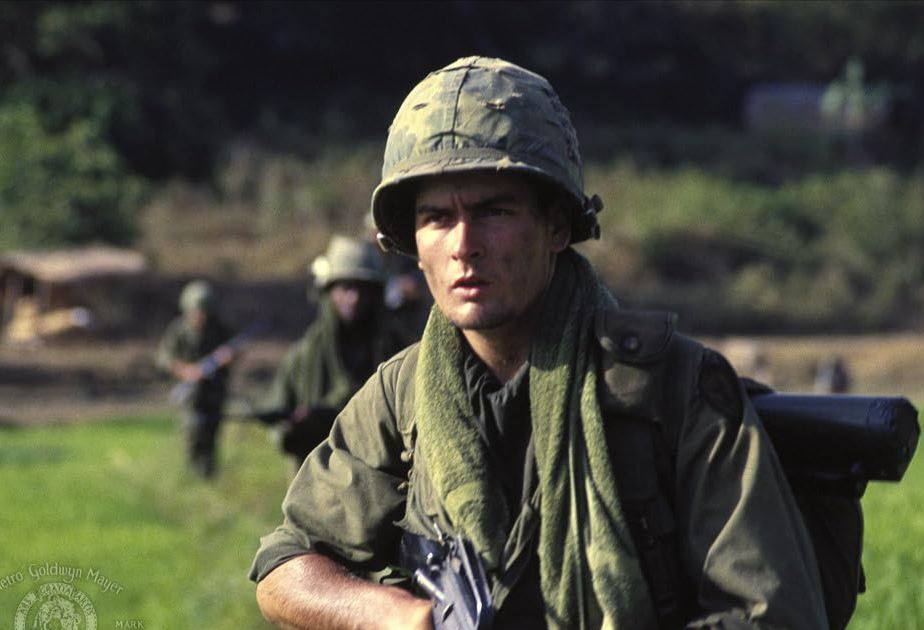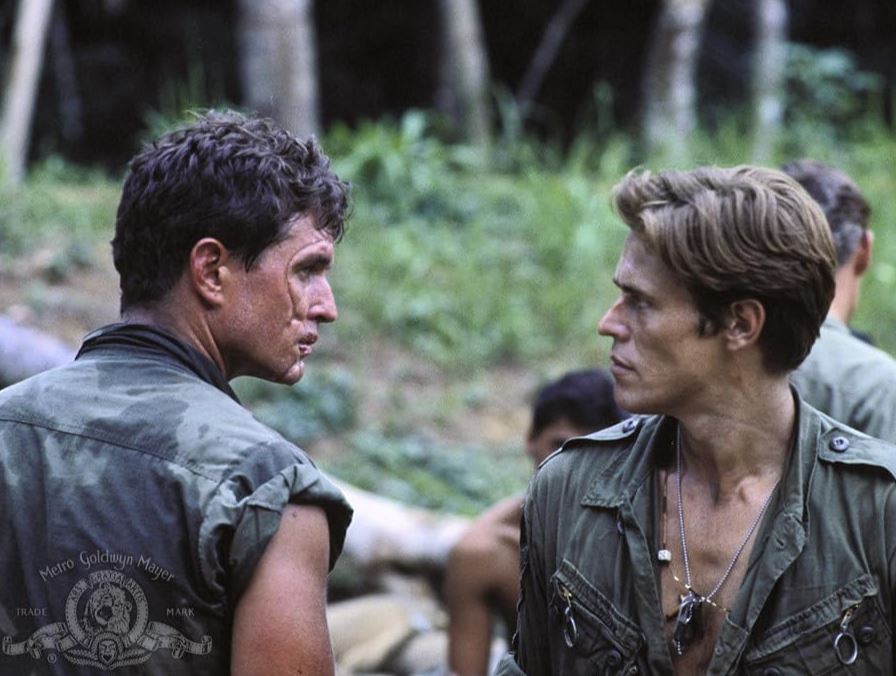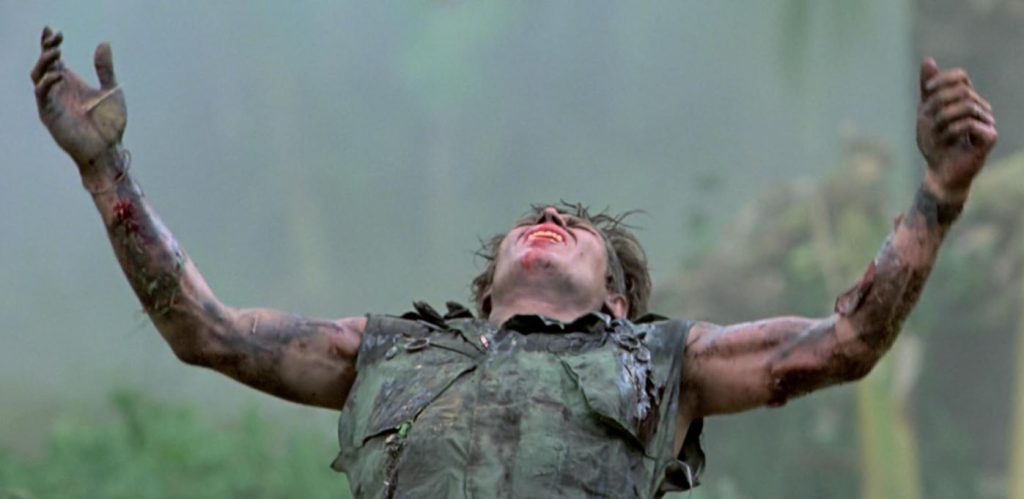
Vietnam is usually thought of as America’s festering sore, but the Aussies also played ball by contributing more than five hundred deaths. However, whereas the Yanks like to pick at the scab through their movies, the Aussies largely left things alone in the 20th century. An exception is 1979’s The Odd Angry Shot. As the name implies, this follows the maxim that war is one percent terror and ninety-nine percent boredom.
And so we’re introduced to a bunch of SAS diggers larking around, betting on weird stuff, bitching, winding up their superiors and having the occasional skirmish with the enemy. It’s not the greatest film, partly down to the plausibility-denting decision to film locally rather than in Nam, but mainly because any war flick worth its salt needs to focus on action rather than M*A*S*H-style pranks. Its main surprise is Bryan Brown and John Jarratt getting their cocks out, a move which only reinforces my belief that full-frontal nudity should be left to the sheilas.
Now I have no idea if Oliver Stone saw the ground-level Shot, but if he did, he surely took note of its flaws and the need to up that one percent terror quotient. The end result is that Shot has been forgotten while Platoon made a mint, snagged four Oscars and went on to become one of the best-known Nam flicks.

Cast: Charlie Sheen, Willem Dafoe, Tom Berenger, Keith David, Forest Whitaker, John C. McGinley, Kevin Dillon
The story: Essentially it’s two hours of blundering around a VC-infested jungle in 1967 near the Cambodian border. Our main guide is the naive, scared shitless volunteer Chris Taylor (Sheen), a ‘cheese dick’ grunt that explains things via letters home to his grandma. “I don’t even know what I’m doing,” he tells her. “A gook could be standing three feet in front of me and I wouldn’t even know it.” When he’s not fighting off assaults from ants, snakes, leeches, torrential rain, clinging mud and barely glimpsed enemy soldiers, he’s caught in a Good vs. Evil battle between Sgt. Elias (Defoe) and the scar-faced Sgt. Barnes (Berenger).
Why it works: The first hour. Stone served in Nam and obviously built on his firsthand experiences. The authenticity, from the dialogue and hellish jungle conditions to the camaraderie and the intensity of the combat sequences, is all there on the screen. The grunts are convincingly depicted as uneducated ‘bottom of the barrel’ men who have nothing waiting for them back in whatever no-name town they’ve arrived from.
Platoon is a tense flick, leaving us unsure when an attack is gonna come or who’s gonna buy it. This is typified by the exploration of an abandoned VC bunker and tunnel complex during which a booby trap removes a grunt’s arms. Like Shot, the enemy is barely seen. They’re a phantom jungle presence, leaving paranoia and hair-trigger reactions to reign supreme. The direction is never less than assured.

Given Stone is a decorated soldier and he dedicated the pic to those who served in Nam, it’s both surprising and refreshing that he depicts US infantrymen in such a relatively poor light. This is best illustrated during Platoon’s standout sequence when the soldiers arrive at a village looking for a little payback (“Let’s go for it! Let’s do the whole fucking village!”) No doubt Stone had My Lai in mind, although he stops short of going that far. Even so, the sadistic contempt for the villagers (that includes shooting their livestock, illegal killings, an attempted gang rape and the eventual razing of their homes) provides a powerful microcosm in illustrating everything that was wrong with the agonising conflict.
What works against it: The second hour. Platoon has no overarching storyline. In Apocalypse Now we were always aware of Willard’s mission to assassinate Kurtz, but Stone’s grunts lack a goal. They’re just flailing in the jungle with zero aim, except to stay alive and get home in one piece. This is exciting for a while but the effect wears off and becomes a little repetitive.
Taylor’s voiceover is also unnecessary and rather banal. I mean, listen to his closing remarks: “We did not fight the enemy. We fought ourselves. And the enemy was in us… We have an obligation to build again, to teach to others what we know, and to try with what’s left of the rest of our lives to find a goodness and meaning to this life.” Can you imagine Kubrick allowing one of his flicks to be contaminated by such obvious sentiment? Now I don’t mind Charlie Sheen as an actor and he’s initially good here as a ‘cherry’ barely coping with the rude shock of his newfound life. However, he’s much less convincing when unleashing his animal side, even if he does at one point slip on a Rambo-style bandana.

I guess I also have to mention Sgt. Elias’ melodramatic death. For a start it’s puzzling how this guy firstly survives two slugs in the chest from his nemesis, Barnes. Next I have no idea how Taylor manages to spot him on the ground from a departing chopper as the VC pursues him. Elias turns into a human yoyo, up, down, crawling, up again, and finally on his knees with both arms raised to heaven like a G.I. Jesus. Gawd, it’s way over the top, not helped by the umpteenth use of Adagio for Strings in full sickly flow once again.
Verdict: Platoon excels at giving us a flavor of Nam by depicting the rampant fear, incompetence, toxic chemistry, treachery, drug abuse, savagery, mental breakdown, machismo and sustained chaos that the sleep-deprived soldiers endured – accompanied, of course, by those 60s songs like White Rabbit. Characterisation is solid rather than memorable. You can’t fault its overwhelmingly well-captured realism, but when stacked up against the best Nam flicks it lacks the trippy edge of Apocalypse and the emotional impact of Deer Hunter.
Saddest Song Ever
Leave a Reply